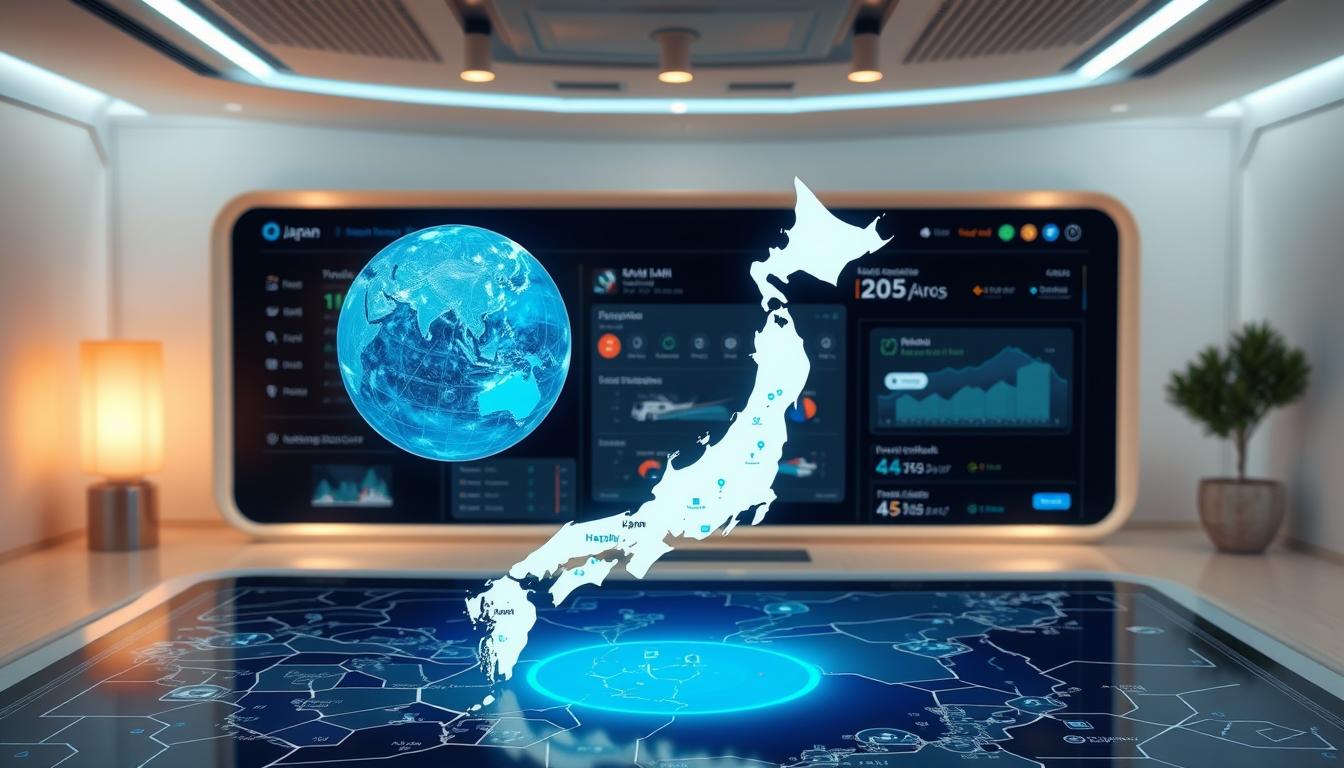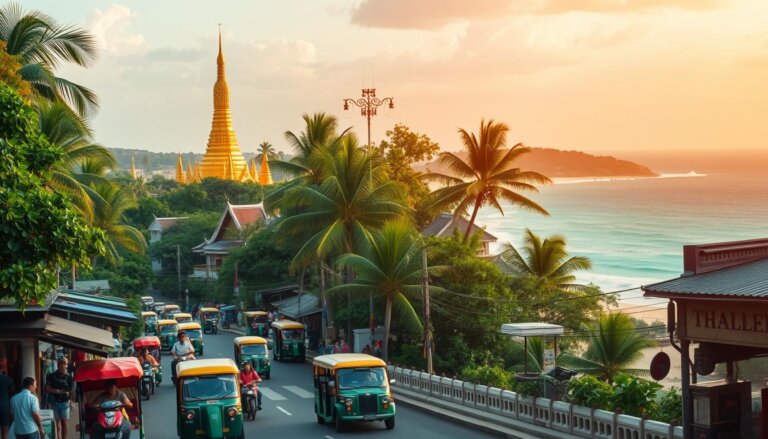How I Used AI to Plan a 7-Day Japan Trip in 10 Minutes
Planning a trip to Japan used to take weeks. It involved lots of research and organizing. I did it in under 10 minutes—with AI. This made me think about how AI can change travel planning.
Before, planning a trip was hard. It needed lots of research and organization. But now, japan trip planner ai makes it easier.
With quick trip planning with ai, I made my trip planning fast and fun. In this article, I’ll tell you how I planned my 7-day Japan trip in just 10 minutes with AI.
The Traditional Trip Planning Nightmare
Planning a trip the old way is often a mess. I’ve been there, and it’s a big headache for many. It’s a frustrating process that many travelers can relate to.
Weeks of Research and Dozens of Tabs
Planning a trip used to mean weeks of exhaustive research. You’d have dozens of tabs open, trying to learn everything about your destination. This is not only time-consuming but also overwhelming. It makes it hard to decide on your itinerary.

The Spreadsheet Madness
To keep track of everything, people often use spreadsheets. They track flights, accommodations, and activities. While it helps organize things, it can get cumbersome and prone to errors. Luckily, artificial intelligence travel planning and automated trip planning are here to help.
These advanced tools make planning easier and less stressful. They promise a more streamlined and enjoyable experience for travelers.
My Japan Trip Context: First-Time Solo Traveler on a Budget
Planning a trip to Japan on a tight budget was daunting for me as a first-time solo traveler. Japan’s mix of traditional and modern culture fascinated me.
Why Japan Was My Dream Destination
Japan’s diverse experiences, from Tokyo’s busy streets to Kyoto’s calm gardens, excited me. Its rich culture, tasty food, and advanced tech made it perfect for my first solo trip.
My $1,500 Budget Challenge
I had to watch every penny with a $1,500 budget. I planned carefully to enjoy my trip without overspending.
| Category | Budget Allocation |
|---|---|
| Transportation | $500 |
| Accommodation | $400 |
| Food and Activities | $600 |
AI travel planning was a big help, saving me time and money. It made sure I got the most out of my Japan trip.
How I Used AI to Plan a 7-Day Japan Trip in 10 Minutes
Planning a 7-day Japan trip was a breeze thanks to AI. As a first-time solo traveler on a budget, I needed a quick and affordable way to plan. Using AI technology for travel planning saved me time and gave me a trip tailored to my likes.
The AI Tools I Selected
I picked the best AI tools for planning my Japan trip. I chose ChatGPT, a top language model for making detailed itineraries. It helped me plan everything from transportation to activities in just a few minutes.
Setting Up My Planning Strategy
To get the most from the AI tool, I set a clear plan. I told it about my travel likes, budget, and trip length. By asking specific questions about my Japan itinerary, I got a plan that fit me perfectly. This way, I made the most of the AI vacation planner and had a great trip.
With the right AI tools and a solid plan, I planned my 7-day Japan trip in 10 minutes. This showed how AI can change travel planning, making it easier and more personal for everyone.
Minute 1: The Perfect AI Prompt
Creating a precise prompt is key to a great AI trip planning experience. This first step is vital in getting a top-notch itinerary for my Japan trip.
Crafting a Comprehensive Query
I had to think about my travel likes, budget, and trip length when crafting my prompt. I chose ChatGPT because it’s great at understanding natural language.
The Exact Prompt I Used with ChatGPT
My prompt was: “Plan a 7-day Japan trip for a solo traveler on a budget of $1,500. Include must-see spots, local food tips, and places to stay.”
I also shared my love for cultural experiences and finding deals to help the AI better understand me.
| Category | Preference |
|---|---|
| Travel Style | Solo, budget-conscious |
| Interests | Cultural experiences, local cuisine |
| Budget | $1,500 for 7 days |
By making a detailed and structured prompt, I used the AI’s strengths for quick trip planning with AI. This made my travel planning fast and fun.
This method of AI trip planning not only saved time. It also gave me a custom itinerary that fit my needs and likes.
Minutes 2-4: AI Generates the Full Itinerary Breakdown
The AI tool quickly made a detailed 7-day Japan itinerary. It impressed me with its fast and smart travel planning. The plan included a list of cities to visit, top attractions, and food tips.
City Selection and Travel Sequence
The AI picked Tokyo, Kyoto, and Osaka as the main spots for my trip. It suggested a smart order to visit these places, avoiding going back and forth. It said to go from Tokyo to Kyoto, then Osaka, and back to Tokyo for leaving.
Must-See Attractions and Hidden Gems
The AI mixed famous spots with secret gems. In Tokyo, it suggested Shibuya Crossing and Shinjuku Gyoen. In Kyoto, it pointed out Fushimi Inari Shrine and Kiyomizu-dera Temple, plus the Philosopher’s Path.
For Osaka, it mentioned Osaka Castle and Dotonbori. These choices were both well-known and off the beaten path.
Food Recommendations and Cultural Insights
The AI also gave food tips, like sushi at Tsukiji Outer Market in Tokyo. It suggested kaiseki in Kyoto and street food in Osaka’s Dotonbori. It also shared cultural tips, like the right way to bow and the best times to visit places.
| City | Attractions | Food Recommendations |
|---|---|---|
| Tokyo | Shibuya Crossing, Shinjuku Gyoen | Sushi at Tsukiji Outer Market |
| Kyoto | Fushimi Inari Shrine, Kiyomizu-dera Temple | Kaiseki |
| Osaka | Osaka Castle, Dotonbori | Street food in Dotonbori |
This detailed plan showed how artificial intelligence in travel planning is efficient and tailored to each person.
Minutes 5-6: Optimizing for the Japan Rail Pass
I started by making my itinerary better for the Japan Rail Pass. This pass is great for traveling across Japan, especially for a week. I told the AI how to make the most of it.
Teaching AI About the JR Pass Benefits
I gave the AI all the details about the Japan Rail Pass. This included what it covers, how much it costs, and which trains it works on. This helped the AI plan my trip better. It learned that the pass is best for long trips on JR trains, like bullet trains.
Restructuring the Route for Maximum Efficiency
The AI then changed my itinerary to use the JR Pass more. It made sure I took JR trains for long trips. For example, it changed my route between Tokyo, Kyoto, and Osaka to use the JR Pass more.
| Original Route | Optimized Route |
|---|---|
| Tokyo to Kyoto by bullet train | Tokyo to Kyoto by JR bullet train |
| Kyoto to Osaka by local train | Kyoto to Osaka by JR limited express |
By changing my route, the AI saved me money and made my trip smoother. This showed how ai travel itinerary planning can make your trip cheaper and more efficient.
Minutes 7-8: Strategic Accommodation Planning
I kept using the AI tool for planning my 7-day Japan trip. It helped me pick the best places to stay in Tokyo, Kyoto, and Osaka. The AI vacation planner gave me great tips.
Shinjuku vs. Shibuya: AI’s Tokyo Recommendations
The AI compared Shinjuku and Shibuya for Tokyo stays. It said Shinjuku is closer to local spots and has a lively night scene. On the other hand, Shibuya is trendy and youthful. But the AI chose Shinjuku for its mix of convenience and local feel.
Finding the Perfect Spots in Kyoto’s Gion District and Osaka
In Kyoto, the AI pointed out the Gion District. It’s rich in history and close to key sights. For Osaka, it recommended spots near public transport, like Osaka Station or Dotonbori. The AI’s advice helped me choose the right places to stay, making my trip more comfortable and easy.
Thanks to the AI, I planned my stays well. This made my Japan trip even better.
Minutes 9-10: Seasonal Packing Suggestions
As I used AI for planning my Japan trip, I was amazed by its seasonal packing tips. It was super helpful for my November trip, as it helped me get ready for the weather.
November Weather Patterns in Japan
The AI looked at the weather for Tokyo, Kyoto, and Osaka. It told me November is usually mild. The highs are about 18°C (64°F), and lows are around 8°C (46°F).
AI-Generated Essential Items List
The AI gave me a list of must-haves. It included layers, waterproof stuff, and comfy shoes. It also said to bring a portable umbrella and warm clothes for chilly mornings and nights.
| Item | Reason |
|---|---|
| Layers | For temperature control |
| Waterproof gear | For unexpected rain |
| Comfortable shoes | For extensive walking |
Using AI for packing made my trip planning efficient. I was ready for the weather without packing too much.
The Complete AI-Generated Japan Itinerary
My 7-day Japan trip was planned by AI, and it changed everything. It gave me a day-by-day plan that made my trip unforgettable. The AI trip planning tool picked the best places and arranged them for easy travel.
Days 1-2: Tokyo’s Urban Wonders
Tokyo is a city where old meets new. It was the perfect start for my journey. The AI plan included famous spots and local gems.
Morning Explorations
I started with fresh sushi at Tsukiji Outer Market for breakfast. Then, I visited the Meiji Shrine, a peaceful Shinto shrine in a forest.
Afternoon Adventures
Next, I saw Shibuya Crossing, the world’s busiest spot. I also walked through Harajuku district. The AI suggested a visit to the Tokyo Skytree for city views.
Evening Experiences
Tokyo’s nights were full of life. The AI recommended Shinjuku’s Golden Gai for tiny bars and a izakaya experience.
Days 3-4: Kyoto’s Traditional Beauty
Kyoto is famous for its temples and gardens. The AI plan included visits to famous sites and cultural activities.
Temple and Shrine Circuit
I saw the Fushimi Inari Shrine with its vermilion gates. I also visited Kinkaku-ji Temple and walked through the Arashiyama Bamboo Grove.
Cultural Immersion Activities
I joined a traditional tea ceremony and explored the Gion district, known for geishas.
Days 5-6: Osaka’s Vibrant Energy
Osaka is known for its food and fun. The AI plan focused on the city’s food and attractions.
Food Paradise Exploration
I checked out Dotonbori for its street food and lights. The AI suggested trying takoyaki and okonomiyaki.
Urban Attractions
Highlights included Osaka Castle and the Umeda Sky Building for city views.
Day 7: Final Experiences and Departure
The last day was for shopping and reflecting on my trip. The AI plan made my travel smooth and fun, making the most of my Japan time.
Using artificial intelligence travel planning tools was a game-changer. It gave me a structured and engaging trip that I’ll always remember.
AI’s Travel Planning Strengths: What Impressed Me
The AI travel planning tool I used was amazing. It made planning my trip easy. Three key strengths stood out: it saved me a lot of time, understood travel details well, and worked within my budget.
Remarkable Time Efficiency
What really impressed me was how fast AI worked. It created a 7-day Japan itinerary in just 10 minutes. This saved me hours, letting me focus on other trip details.
Contextual Understanding of Travel Logistics
AI knew all about travel, like how to get around. It planned my route to avoid wasting time. This was especially helpful in busy cities like Tokyo and Kyoto.
Adaptability to Budget Constraints
AI also kept my costs in check, sticking to my $1,500 budget. It found a balance between affordable and memorable experiences. It suggested both free and paid attractions, and budget-friendly places to stay.
In summary, the AI vacation planner was a game-changer. It made planning my Japan trip easy with automated trip planning. Its ability to meet my needs made it essential for my trip.
AI’s Planning Limitations: Where It Fell Short
Using AI for my Japan trip planning showed both its strengths and weaknesses. It made planning easier in many ways. Yet, there were areas where it didn’t offer a full experience.
Outdated Attraction Information
The AI’s biggest problem was its reliance on old information about attractions. For example, some spots in Tokyo and Kyoto had changed their hours or were closed. This outdated info could cause inconvenient travel plans and unforeseen disruptions.
Missing the Authentic Local Perspective
The AI also lacked the real local insights. It gave general tips but missed the unique, local experiences that make a trip special. For instance, it didn’t suggest a fresh sushi breakfast at the Tsukiji Outer Market in Tokyo or exploring the narrow alleys of Kyoto’s Gion district.
Budget Estimation Inaccuracies
The AI also had trouble with budget estimates. It often underpredicted costs for activities and places to stay, especially in Osaka. This made it hard to keep to my $1,500 budget, forcing me to make changes.
Despite these issues, the AI tool was still very helpful for quick trip planning with AI. It gave a good starting point that I could adjust as needed. For those thinking about AI trip planning in the future, knowing these limitations is key to planning well.
Conclusion: Is AI the Future of Travel Planning?
My experience with AI planning a 7-day Japan trip in 10 minutes was amazing. It showed how AI can change travel planning. Now, planning trips can be quick and easy.
The AI plan included top sights, hidden spots, and what to pack for the season. This is a big win for travelers. It saves time and helps make trips better without endless planning hours.
AI is great at saving time and fitting budgets, but it’s not perfect. It can have old info and not always get the budget right. These are things AI needs to get better at.
Still, AI is a big step forward in travel planning. As tech gets better, AI will likely become even more useful. It could become a key tool for travelers everywhere.
FAQ
What AI tools can I use for trip planning?
You can use AI tools like ChatGPT for making itineraries and translating languages. It also gives cultural insights. Google Maps and trip planning apps help with navigation and booking places to stay.
How do I craft the perfect AI prompt for trip planning?
To make a great AI prompt, be clear about your travel dates, places, budget, and what you like. For example, ask ChatGPT to “Plan a 7-day Japan trip in November on a
FAQ
What AI tools can I use for trip planning?
You can use AI tools like ChatGPT for making itineraries and translating languages. It also gives cultural insights. Google Maps and trip planning apps help with navigation and booking places to stay.
How do I craft the perfect AI prompt for trip planning?
To make a great AI prompt, be clear about your travel dates, places, budget, and what you like. For example, ask ChatGPT to “Plan a 7-day Japan trip in November on a $1,500 budget, including Tokyo, Kyoto, and Osaka.”
Can AI help with optimizing my Japan itinerary for the Japan Rail Pass?
Yes, AI can make your Japan itinerary better for the Japan Rail Pass. It can change your travel order to save money and time.
How accurate are AI-generated packing suggestions?
AI packing suggestions are usually right if you tell it your travel dates and places. For example, it might suggest layers for Japan’s November weather.
What are the limitations of using AI for travel planning?
AI is great for planning trips but has some downsides. It might not have the latest attraction info, miss local views, and sometimes get budgets wrong.
Can AI adapt to budget constraints?
Yes, AI can find cheap places to stay, travel, and do things. This helps you keep your budget in check.
How does AI understand travel logistics?
AI gets travel logistics by looking at lots of data. It considers transport, places to stay, and schedules to make a good plan.
Is AI the future of travel planning?
AI could change travel planning a lot. It’s fast, flexible, and gets the context. But, it’s not perfect yet and has some limits.
Can I rely solely on AI for trip planning?
AI can make a detailed plan, but you should double-check important stuff like where you’ll stay and how you’ll get there. This ensures a smooth trip.
How long does it take to plan a trip using AI?
AI makes planning trips much quicker. For example, you can plan a 7-day Japan trip in under 10 minutes.
,500 budget, including Tokyo, Kyoto, and Osaka.”
Can AI help with optimizing my Japan itinerary for the Japan Rail Pass?
Yes, AI can make your Japan itinerary better for the Japan Rail Pass. It can change your travel order to save money and time.
How accurate are AI-generated packing suggestions?
AI packing suggestions are usually right if you tell it your travel dates and places. For example, it might suggest layers for Japan’s November weather.
What are the limitations of using AI for travel planning?
AI is great for planning trips but has some downsides. It might not have the latest attraction info, miss local views, and sometimes get budgets wrong.
Can AI adapt to budget constraints?
Yes, AI can find cheap places to stay, travel, and do things. This helps you keep your budget in check.
How does AI understand travel logistics?
AI gets travel logistics by looking at lots of data. It considers transport, places to stay, and schedules to make a good plan.
Is AI the future of travel planning?
AI could change travel planning a lot. It’s fast, flexible, and gets the context. But, it’s not perfect yet and has some limits.
Can I rely solely on AI for trip planning?
AI can make a detailed plan, but you should double-check important stuff like where you’ll stay and how you’ll get there. This ensures a smooth trip.
How long does it take to plan a trip using AI?
AI makes planning trips much quicker. For example, you can plan a 7-day Japan trip in under 10 minutes.







